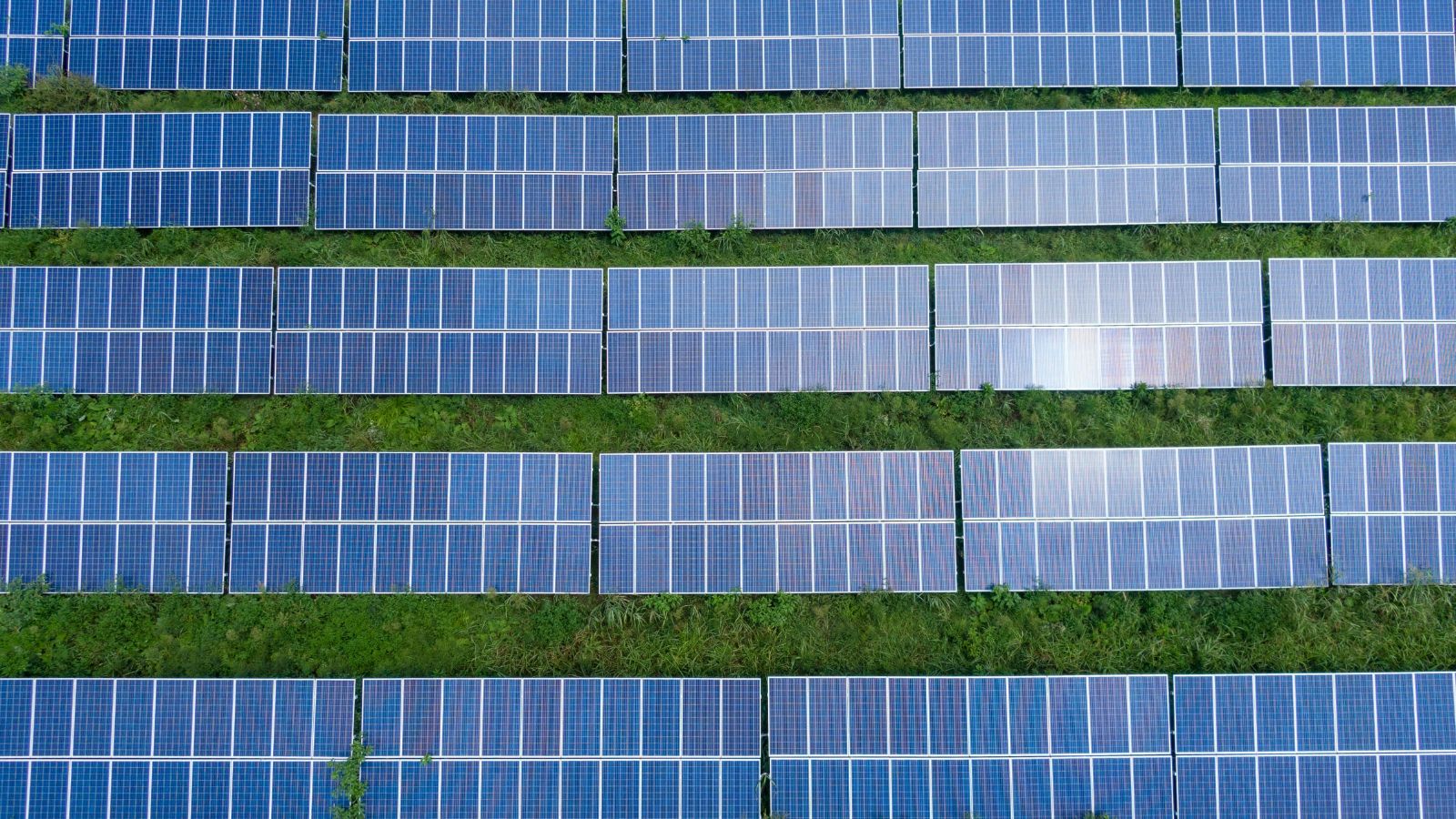COP30
Greenwashing at Scale: How Big Oil Flooded Brazil With Ads Ahead of COP30
A global investigation reveals a 2,900% spike in oil-funded Google ads targeting Brazil, exposing a sophisticated digital greenwashing campaign designed to shape public opinion before COP30.

As COP30 concluded in Belém, a new report details how Big Oil used the months leading up to the summit to launch a massive digital greenwashing push across Brazil, one of the largest offensives seen in recent years. A new investigation reveals that major oil companies increased their Google ads targeting Brazil by an astonishing 2,900%, flooding search results with “clean energy” narratives designed to obscure their fossil-heavy expansion plans.
The report, A 2,900% Increase in Greenwash, released by the Climate Action Against Disinformation coalition (CAAD) and the Climainfo Institute, exposes how the world’s largest oil firms strategically poured money into Google’s advertising ecosystem between January and October 2025, with ad volumes peaking as Brazil’s COP30 preparations intensified and public debate around climate ambition surged.
The findings paint a stark picture, while oil companies publicly marketed themselves as climate allies, behind the scenes they executed a high-intensity digital influence operation aimed at shaping climate perceptions in the very country responsible for convening the next global climate negotiations.
“Every year Big Oil spends big money on greenwashing and disinformation to justify the pollution that’s killing people and the planet,” said Renata Albuquerque Ribeiro, a researcher at Climainfo, in a media statement. “This year, the scale went off the charts.”
“The scale of this advertising blitz is unprecedented and timed with precision to coincide with Brazil’s central role in global climate diplomacy,” said campaigners in a media statement accompanying the report.
“Every year Big Oil spends big money on greenwashing and disinformation, and it’s well past time policymakers stop letting Big Tech players like Google get rich off lies used to justify the pollution that’s killing people and the planet,” said CAAD coalition communications co-chair Philip Newell.
Brazil: A New Frontline in Fossil-Fuel Influence
Brazil’s selection as COP30 host has transformed the country into a strategic communication battleground. With the Amazon at the centre of global climate politics, Brazil’s diplomatic leadership poses a reputational challenge for oil giants that continue expanding fossil-fuel investments.
This context, researchers say, made Brazil a prime target for polished, tech-enabled influence campaigns.
Between January and October 2025:
- Oil companies purchased thousands of Google ads promoting “clean energy transitions,” “carbon-neutral futures,” and “sustainable innovation.”
- Ads surged most sharply in August–September, aligning with Brazil’s COP30 diplomatic roadmap announcements.
- Search terms related to “Brazil energy transition,” “climate leadership,” and “COP30 sustainability” were among the most heavily targeted.
Behind the glossy messaging, however, the report finds “systematic attempts to rebrand fossil expansion as climate progress” — a redirection strategy designed to nudge public sentiment in a country now shaping the agenda for global climate action.
2,900%: A Number That Signals Intent
A spike of nearly 30-fold in advertising is not organic. It is strategic.
Campaign researchers show that:
- In early 2025, oil companies ran almost no Google ads targeted specifically at Brazil.
- By mid-2025, this changed dramatically as the COP30 calendar gained traction.
- By October, ad volumes had soared 2,900% above January baselines.
“This is not simply a PR campaign — it is an influence operation with global stakes,” said the report’s authors.
The ads consistently highlighted themes such as “net-zero commitments,” “innovation pathways,” and “green technologies,” despite independent assessments showing these companies are increasing oil and gas investments far faster than clean energy expenditure.
“Petrobras, Brazil’s state-owned oil company, responsible for 86% of the country’s oil incidents, ran 665 ads in the first 10 months of 2025,” the report states.
“Saudi Aramco accounted for the highest share of ads in October. TotalEnergies and ExxonMobil dramatically increased their presence in mid-year. BP’s ads peaked as COP30 planning intensified,” one section of the report notes.
The Anatomy of Digital Greenwashing
The investigation found that nearly all ads shared three unifying characteristics:
1. Promoting Fossil Expansion as ‘Energy Security’
Ads framed continued oil and gas development as essential for stability, echoing language oil companies now frequently use to justify new drilling projects.
2. Overstating Climate Efforts
Phrases such as “leading on climate” and “investing in a net-zero future” dominated messaging — despite internal plans showing the opposite.
3. Targeting ‘Climate-Aware’ Audiences
The ads were deployed in Portuguese and English, aimed at Brazil’s urban, digitally connected population who would be most engaged in COP30 discourse.
This hyper-targeted strategy, the report says, relied heavily on Google’s algorithmic ad capabilities, allowing companies to “embed green narratives directly into the search environments of millions of Brazilians.”
Global Climate Diplomacy Meets Big Tech Influence
The findings raise alarming questions about the role of digital platforms in shaping global climate negotiations.
“Allowing fossil-fuel producers to amplify misleading narratives before a critical UN summit undermines democratic climate debate,” campaigners said in a media statement.
Experts warn that COP30 — intended to accelerate global transitions away from fossil fuels — risks becoming a communications battlefield dominated by the industries most responsible for climate instability.
“We believe that greenwashing in adverts by fossil fuel companies poses a major threat to climate information integrity,” added Travis Coan of C3DS.
In past summits, oil and gas lobbyists have been present inside negotiation halls. But the digital ad surge in Brazil signals a shift: the battle for influence is increasingly happening online, long before diplomatic delegations arrive.
Why Brazil Was Targeted
The report outlines several reasons Brazil became the epicentre of Big Oil’s digital scrutiny:
- COP30 host status: Global attention is shifting to Brazil’s climate platform.
- Amazon factor: The Amazon is a symbol of climate urgency — a narrative oil firms seek to overshadow.
- Energy transition debate: Brazil’s growing renewable portfolio contrasts sharply with fossil expansion elsewhere.
- Emerging regulatory gaps: Brazil lacks strict digital transparency laws governing paid climate messaging.
These conditions provided oil companies with a fertile landscape to reposition themselves as climate partners while continuing to invest heavily in fossil extraction.
When Greenwashing Meets Algorithms
The report argues that digital greenwashing has evolved beyond traditional PR. Today, misleading narratives are: algorithmically amplified, micro-targeted, geographically tailored, optimized for search behaviours, and delivered at scale.
The risk, researchers warn, is not just misinformation — it is the embedding of climate narratives that subtly distort public understanding of energy pathways.
And unlike political advertising, corporate climate ads often escape regulatory scrutiny.
From Big Oil to Big Influence: The Policy Gap
Despite the scale of the ad surge, there are few global frameworks requiring companies to disclose their digital spending on climate messaging.
Campaigners argue this gap gives fossil-fuel giants a powerful informational weapon in shaping global climate discourse.
“This level of opaque influence must be urgently addressed — especially when it targets COP host countries,” the report notes.
The authors call for stronger digital ad transparency rules, mandatory disclosures of climate-related paid messaging, clear restrictions on misleading environmental claims, and accountability from tech platforms like Google ahead of global climate events.
The investigation concludes that unchecked digital greenwashing threatens to distort public dialogue as Brazil prepares is hosting one of the most consequential climate negotiations of the decade.
And with oil companies poised to continue expanding their ad budgets into 2026, researchers warn that COP30 may become “the most digitally influenced climate summit ever.”
COP30
From 6% to 16%: The Philippines Shows the World How Fast Climate Budgets Can Shift
In just four years, the Philippines has expanded its climate spending from PHP 282 billion to over PHP 1 trillion — one of the fastest fiscal shifts anywhere in the world.

Governments across the world are beginning to rethink the way national budgets are designed, moving away from traditional fiscal planning and toward systems that integrate climate considerations directly into spending decisions. A new comparative review of global green-budgeting practices reveals a trend that is gathering momentum: more countries are using their budgets as climate-governance tools. But the pace of progress varies sharply between advanced economies and emerging markets.
The Rise of Climate-Conscious Budgets
Countries such as France, Ireland, Mexico and the Philippines provide some of the clearest examples of how climate priorities are reshaping national expenditure. France has increased its identified climate-positive budget from €38.1 billion in 2021 to €42.6 billion in 2025, while Ireland expanded its environmental allocations from €2 billion (2020) to €7 billion (2025). Mexico’s transformation has been even more rapid: climate-related expenditures rose from MXN 70 billion (2021) to MXN 466 billion (2025) — a six-fold increase.
A Sudden Surge in the Philippines
Nowhere is the shift more dramatic than the Philippines. After embedding climate budget tagging across its ministries, the country’s climate budget expanded from PHP 282 billion in 2021 to more than PHP 1 trillion in 2025, raising its share of the national budget from 6% to 16%. The reform forced ministries to assess thousands of programmes through a climate lens, resulting in a shift toward resilient infrastructure, sustainable energy, water security, and climate-smart industries.
Advanced Economies Move Beyond Tagging
While emerging economies are scaling up climate allocations, advanced economies are integrating climate metrics deeper into fiscal systems. Canada’s “climate lens” requires greenhouse-gas and resilience assessments for major infrastructure projects before funding is approved. Norway links its annual budget to its Climate Change Act and long-term low-emission strategies. Germany uses sustainability indicators to guide fiscal decisions, embedding climate considerations into macroeconomic planning.
These tools go beyond transparency. They force ministries to justify public spending not only in economic terms, but in climate terms — shifting budgets from accounting documents to steering instruments.
Despite this momentum, the analysis notes a persistent gap: many countries stop at tagging climate-related expenditures without linking them to outcomes or performance indicators. Tagging improves transparency, but on its own does not change investment decisions. Without climate-based appraisal and monitoring, high-emission infrastructure can still slip through national budgets unchallenged.
The Financing Challenge
For lower-income countries, the largest barriers are financial. High capital costs, limited fiscal room, and weaker public financial management systems restrict the scale of green budgeting reforms. Even when climate spending rises, sustaining these increases requires integrating climate metrics into medium-term fiscal frameworks — something only a handful of emerging economies have attempted.
Innovations Show What’s Possible
Some models offer a blueprint. Indonesia’s climate-tagging system feeds directly into its sovereign green sukuk framework, giving investors clear visibility over the use of proceeds. This loop — tagging, reporting, financing — demonstrates how governments can leverage green budgeting to unlock larger pools of private capital.
Still in Progress
The report concludes that the next frontier for green budgeting is integration: linking budget tagging, climate-lens project appraisal, performance-based reporting, and climate-aligned fiscal strategies. Done together, these tools allow budgets to become climate-governance instruments capable of guiding national transitions.
But the pace remains uneven. Some countries are racing ahead, while others are taking incremental steps. What is clear, however, is that climate-aligned public finance is no longer optional. As climate impacts intensify, the alignment of the world’s budgets will determine who adapts — and who is left behind.
COP30
Clean Energy Push Could Halve Global Warming by 2040, New Analysis Shows
A new Climate Action Tracker analysis shows that tripling renewables, doubling energy efficiency and cutting methane could halve global warming by 2040

A rapid global shift to renewable energy, energy efficiency and methane cuts could halve the rate of global warming by 2040, dramatically altering the world’s climate trajectory, a new Climate Action Tracker (CAT) assessment finds.
The analysis shows that implementing the three core COP28 energy and methane goals—tripling renewable energy capacity, doubling energy efficiency improvements, and delivering steep methane cuts by 2030—would bring down projected warming from the current 2.6°C to 1.7°C by the end of the century.
Crucially, these actions would sharply slow near-term warming, reducing the pace of temperature rise by a third by 2035 and nearly half by 2040, compared to today’s rate of ~0.25°C per decade. This slowdown is critical not just for long-term climate goals but for immediate survival, the report stresses.
A Turning Point
The world is already struggling to cope with accelerating climate impacts. With ecosystems collapsing faster than species can adapt and communities facing worsening heatwaves, storms and crop failures, “catching up” on adaptation has become a global emergency.
CAT warns that under current policies, warming could continue rising throughout the century, leaving governments perpetually behind on adaptation planning. But halving the warming rate would give both people and ecosystems a fighting chance to adjust.
A 0.9°C Improvement in the Global Outlook
If all countries implement the three goals, the resulting emission cuts—14 GtCO₂e by 2030 and 18 GtCO₂e by 2035—would reduce expected warming this century by 0.9°C, one of the most significant improvements since the Paris Agreement.
“This is the single biggest step governments can take this decade, using goals they have already negotiated and agreed to,” the report notes.
Where the Reductions Come From
- Tripling renewables: ~40% of total emission reductions
- Doubling energy efficiency: ~40%
- Methane cuts: ~20%, but delivering disproportionate warming benefits due to methane’s strong short-term impact
Finance Is the Missing Link
The report underscores that technology is not the barrier—finance is. Many emerging economies cannot deploy renewables or upgrade grids at the necessary pace without scaled-up international support.
Still, the authors say the pathway is feasible and grounded in technologies already available at commercial scale.
While the world is almost certain to overshoot 1.5°C by the early 2030s, the duration and magnitude of that overshoot will determine future levels of loss and damage. Delivering the COP28 energy and methane goals, the report concludes, is the most powerful tool the world currently has to limit that overshoot and avoid runaway climate impacts.
COP30
Health Systems ‘Unprepared’ as Climate Impacts Intensify, Experts Warn at COP30
India will require $643 billion between now and 2030 to adapt to climate change under a business-as-usual scenario

On Health Day at COP30 (November 13), global health and climate experts warned that the world is dangerously underprepared for the accelerating health impacts of climate change, calling for a dramatic scale-up of adaptation finance to protect vulnerable populations.
Speaking at a press conference hosted by Regions4, the Global Climate & Health Alliance and CarbonCopy, leaders from research institutions and national governments said climate-linked health threats — from extreme heat to wildfire smoke — are rising sharply while funding remains “colossally” insufficient.
“Each year, more than half a million lives are lost due to heat, and over 150,000 deaths are linked to wildfire smoke exposure,” said Dr. Marina Romanello, Executive Director of the Lancet Countdown. “Health systems, already stretched and underfunded, are struggling to cope with these growing pressures, and most are still unprepared for what is coming.”
Romanello added that despite the scale of the crisis, “only 44% of countries have costed their health adaptation needs, and existing finance falls short by billions. Without urgent investment, we will not be able to protect populations from escalating climate impacts.”
Adaptation gap continues to widen
The speakers described health-sector underfunding as a critical part of the broader adaptation finance gap. The latest UNEP Adaptation Gap Report estimates developing countries will need $310–365 billion annually by 2035, while the international community is still struggling to mobilise even the $40 billion Glasgow Pact Goal.
“With regards to finance, the reality is that we have a deficit that is quite colossal,” said Carlos Lopes, Special Envoy for Africa, COP30 Presidency. “Most of the efforts are from national authorities. What we need from international finance is that it must be complementary.”
Lopes cautioned that climate and health policy still operates in “multiple contested layers,” warning that unless these are aligned, “we risk losing coherence in our global response.”
Countries highlight urgent needs
Representatives from Bangladesh, Nigeria, India and Chile echoed concerns that adaptation finance is far from matching on-ground needs.
“Our adaptation financing for health is far below what is needed. The gap between what we require and what we receive is enormous,” said Md Ziaul Haque, Additional Director General, Ministry of Environment, Bangladesh. He urged multilateral finance entities to bring forward “concrete, holistic proposals that match the scale of the challenge.”
Nigeria’s challenges are equally stark. “In Nigeria, we are facing an additional 21% disease burden due to climate change… yet the adaptation finance we received in 2021–22 only met 6% of our needs,” said Oden Ewa, Commissioner for Special Duties and Green Economy Lead. He called adaptation finance a “lifeline that saves lives, strengthens communities, and protects economies.”
India outlines its adaptation burden
India also presented updated estimates of its climate adaptation needs. “India will require $643 billion between now and 2030 to adapt to climate change under a business-as-usual scenario,” said Dr. Vishwas Chitale of the Council for Energy, Environment & Water. He noted that India has already made “significant progress, spending $146 billion in 2021–2022 alone — 5.6% of GDP.”
New funding coalition signals momentum
Speakers highlighted the launch of the Climate and Health Funders Coalition, which has committed an initial $300 million annually.
“This is an encouraging signal… It shows that the world is beginning to recognise that protecting health must be at the centre of climate adaptation,” said Jeni Miller, Executive Director, Global Climate & Health Alliance.
Health at the centre of adaptation
Chile stressed the need for integrated policy approaches.
“It is vital to combine the efforts of different ministries — not only health but also transport, energy and food production — so that we generate co-benefits across sectors,” said Dr. Sandra Cortes, President of Chile’s Climate Change Scientific Committee. “A more integrated approach will allow us to improve public health, reduce emissions and create fairer, more sustainable development opportunities.”
As negotiators continue discussions in Belém, experts reiterated that adaptation finance — especially for health — must be just, equitable, accessible and prioritise the most climate-vulnerable nations. The recently proposed Belém Health Action Plan and the Global Goal on Adaptation are expected to serve as frameworks for strengthening health system resilience worldwide.
-

 Know The Scientist5 months ago
Know The Scientist5 months agoRemembering S.N. Bose, the underrated maestro in quantum physics
-

 Space & Physics4 months ago
Space & Physics4 months agoJoint NASA-ISRO radar satellite is the most powerful built to date
-

 Society5 months ago
Society5 months agoShukla is now India’s first astronaut in decades to visit outer space
-

 Space & Physics4 months ago
Space & Physics4 months agoNew double-slit experiment proves Einstein’s predictions were off the mark
-

 Society6 months ago
Society6 months agoAxiom-4 will see an Indian astronaut depart for outer space after 41 years
-

 The Sciences5 months ago
The Sciences5 months agoHow a Human-Inspired Algorithm Is Revolutionizing Machine Repair Models in the Wake of Global Disruptions
-

 Society6 months ago
Society6 months agoWhy the Arts Matter As Much As Science or Math
-

 Earth6 months ago
Earth6 months agoWorld Environment Day 2025: “Beating plastic pollution”





































